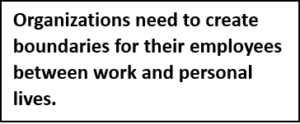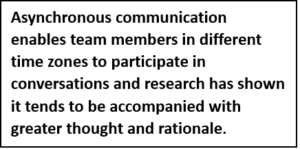Thriving in a Time of Continual Crisis
By Bryan Campbell and Bhavik Modi
The screen unfolds to images of the world reeling from a global airborne virus, Russia and the Middle East are locked in a no-blink oil price war and the most stable countries in the world are roiled by social unrest and riots. This isn’t the start of a Hollywood blockbuster, it’s the beginning of 2020. To describe this as “living in interesting times” would be an understatement and none of these events were anticipated by any of the leading forecasters.  In fact, Deutsche Bank recently released a report that estimates a 33% chance of a global disaster larger than Covid-19 occurring in the next decade[1]. It illustrates that these crises not only can’t be forecast but that we are moving into an age of continual crisis (the Australian and Brazil fires, Brexit and the Hong Kong protests already feel like distant memories).
In fact, Deutsche Bank recently released a report that estimates a 33% chance of a global disaster larger than Covid-19 occurring in the next decade[1]. It illustrates that these crises not only can’t be forecast but that we are moving into an age of continual crisis (the Australian and Brazil fires, Brexit and the Hong Kong protests already feel like distant memories).
However, the progressive advancement of technology, has created a new way for organizations to create the resilience they need to adapt to this business reality. Much has been said about individual resilience but organizations need to build their own muscles for resilience as they go through change. Instead of reacting to disruptions by shifting people and functions into a remote delivery model, it’s time for organizations to take a Remote First approach and re-create themselves to operate as an efficient, disruption-proof organization. Remote first not only creates a responsive, adaptive means to respond to crisis it also drives down costs, increases talent reach and helps improve the environment.
The Time is Now
One of the most significant changes for millions of people in 2020 has been the shift to working remotely. Countless articles, blogs, and videos have emerged chronicling the change from driving to the office to joining Zoom meetings in your living room. Remote working has helped organizations reduce costs, improve the environment and increase employee morale and yet none of this is particularly new. Technology and infrastructure shifted seamlessly into this new model and validated the push to cloud-based products and investments in network security (Zoom was able to respond to the rapid increase in demand through their use of Amazon and Oracle Cloud services). The good news is that the time is ripe for this, 96% of all Americans have a cell phone[2] and 79% have home broadband services[3] and almost every major software solution has a cloud based, subscription offering.  Worker attitudes towards remote work have shifted significantly with 99% expressing an interest in working remotely at least some of the time for the rest of their career[4]. With these forces all converging, first mover organizations have an opportunity to leverage these trends to their competitive advantage.
Worker attitudes towards remote work have shifted significantly with 99% expressing an interest in working remotely at least some of the time for the rest of their career[4]. With these forces all converging, first mover organizations have an opportunity to leverage these trends to their competitive advantage.
The Benefits Are Real
Creating a Remote First organization unlocks powerful competitive advantages for companies that rapidly adopt this approach. Corporate offices served an important function when communication was primarily limited to face-to-face interactions but it also limited the ability of companies to hire talent outside the commuting distance of their office. With a Remote First strategy organizations can now attract talent anywhere in the world and there is little doubt that these are an organization’s most valuable asset. Having the ability to access talent outside of a 50 mile radius of your corporate office increases and deepens your talent pool. It also has a residual effect of reducing pollution and demands on public infrastructure. It is estimated that CO2 emissions dropped by 17% during the pandemic[5] a significant portion of which was due to reduced vehicle traffic. This might be an important answer to the problem of climate change which will also resonate with new employees entering the job market.
However, there are also powerful bottom line cost saving benefits too. Commercial real estate costs had been increasing for 9 years at the end of 2019[6]. These prices have undoubtedly changed in 2020 but the fact is that providing corporate real-estate is a significant line item on the balance sheet of every company. Organizations can now re-think their investments in sprawling campuses and the high end furniture and consider where to direct that spending.
Start with the Culture
Moving to a Remote First approach needs to support your organization’s people as they adjust to this working environment. Remote working isn’t about the technology, it’s all about the culture. It takes real organizational commitment to unlock the potential of people working remotely. This is an important piece of the fabric of a resilient and adaptive organization and the cornerstone of a Remote First strategy. Remote First means thinking of how to deliver the value of your organization without a centralized office. To do this you need every person in the organization to understand the commitment to working remote and ensuring they are enabled to work this way. This means promoting and rewarding individuals that are working remotely and creating career paths they can pursue to increase their skills. It also means finding ways to keep remote workers invested in the organization even as they have fewer of the reminders that they had when they were working in a corporate office. This could mean providing corporate Zoom backgrounds, green screens, branded mousepads and other reminders of the company. The organization will need to protect the mental health of its works such as affirming its commitment to the benefits of vacation for example. Since remote workers can work anywhere it’s easy for them to bring their laptops on vacation and adjust their schedules to stay connected. It’s important to support the need for constructive breaks from work to re-charge and re-energize. Remote First organizations will need to re-assess their corporate values and ensure these align to this new way of working.
Support Your People
People are the first consideration in moving to a Remote First experience. What does human connectivity and community building look like when people are working remotely? While technology and accessibility have improved significantly over the last decade it hasn’t completely replicated the experience of working together. Organizations need to consider how to recreate these experiences in a remote environment. The introduction of more accessible video conferencing has increased human connection when working remotely and the ability to connect anytime/anywhere has extended the work environment into a wide range of spaces.  Now organizations need to consider how to create boundaries for their employees between work and their personal lives and support their mental health in this space. One way is to encourage employees to “unplug” periodically and to create their ideal work environment in a way they couldn’t in a more traditional work setting. This might mean working on their patio or even moving to a different location now that people are unencumbered by travelling to an office.
Now organizations need to consider how to create boundaries for their employees between work and their personal lives and support their mental health in this space. One way is to encourage employees to “unplug” periodically and to create their ideal work environment in a way they couldn’t in a more traditional work setting. This might mean working on their patio or even moving to a different location now that people are unencumbered by travelling to an office.
Remote work also introduces both a potential benefit and challenge; asynchronous communication[7]. Ensuring your teams have a means to communicate even if they are not able to meet at the same time is critical. Persistent “chats” are increasingly becoming a necessary part of the technology required for remote workers including some, like Automattic, abandoning email with a micro-blogging platform that gives access to ideas and threads that would have been locked away in inboxes.  Asynchronous communication enables team members in different time zones to participate in conversations and research has shown it tends to be accompanied with greater thought and rationale. However, this doesn’t remove the need for more traditional synchronous communication through Zoom meetings which build relationships, align multiple parties and are a better way to discuss sensitive topics.
Asynchronous communication enables team members in different time zones to participate in conversations and research has shown it tends to be accompanied with greater thought and rationale. However, this doesn’t remove the need for more traditional synchronous communication through Zoom meetings which build relationships, align multiple parties and are a better way to discuss sensitive topics.
There are other challenges that companies will need to prepare for as they move to this model. One concern is managing the health of your employees particularly as they begin their shift to permanent remote working. Ensuring safe and ergonomic work environments will be a shared responsibility of companies and their people.
Rethink Your Company
With Twitter recently announcing that its employees will be working remotely permanently[8] it must lead Microsoft and Amazon to question their billion dollar investments in creating Spherical Greenhouses and Tree Houses for their staff. However, Twitter is not alone, Fortune recently surveyed CEOs and learned that more than 25% of their workforce will never return to the office opting to work remotely[9]. Prior to the pandemic there was increasing interest in Zoomers and Millennials to have more flexibility in their work location. Now most large companies are starting to re-evaluate their investments in sprawling campuses with exercise facilities and cafeteria dining. In the past these investments were important to establish work environment that created ‘collisions’ that spurred creativity and ideas. Now organizations need to consider creating these in a virtual world. Some ideas include investing in Artificial Intelligence (AI) that looks at people and their work and connects them to foster creativity.[10]
So what should organizations offer remote workers if they can’t provide tree houses and fitness facilities? These perks can still be extended to staff but in different ways, virtual exercise classes like Pelloton or Steezy are low costs ways to encourage healthy behaviors and providing Door Dash coupons, Amazon gift cards and high-speed internet expense allowances can offer the same benefits of onsite cafeteria but with more options.
Reimagine Your Future
As Satya Nadella recently stated[11] organizations will progress through three phases as they deal with the pandemic: respond, recover and reimagine. Most are rapidly progressing through the respond and recover stages but now is the time to start re-imagining the future. Remote First is one of the first compelling visions of what that re-imagined future might look like. It’s time for every organization to start investing in how to enable and support their move to a Remote First structure.
————————————————————
[1] https://www.marketwatch.com/story/theres-a-one-in-three-chance-of-a-massive-disaster-that-could-be-worse-than-covid-19-says-deutsche-bank-2020-06-17
[2] https://www.pewresearch.org/internet/fact-sheet/mobile/
[3] https://www.pewresearch.org/internet/fact-sheet/internet-broadband/
[4] https://buffer.com/state-of-remote-work-2019
[5] https://www.wired.com/story/the-pandemic-has-led-to-a-huge-global-drop-in-air-pollution/
[6] https://www.jpmorgan.com/commercial-banking/insights/2019-commercial-real-estate-outlook
[7] https://www.hrexchangenetwork.com/employee-engagement/articles/the-value-of-asynchronous-communication-and-how-to-embrace-it
[8] https://www.buzzfeednews.com/article/alexkantrowitz/twitter-will-allow-employees-to-work-at-home-forever
[9] https://fortune.com/2020/05/14/fortune-500-ceo-survey-coronavirus-pandemic-predictions/
[10] https://www.gensler.com/research-insight/blog/fostering-casual-collisions-and-creativity-in-a-virtual
[11] https://www.nytimes.com/2020/05/14/business/dealbook/satya-nadella-microsoft.html



